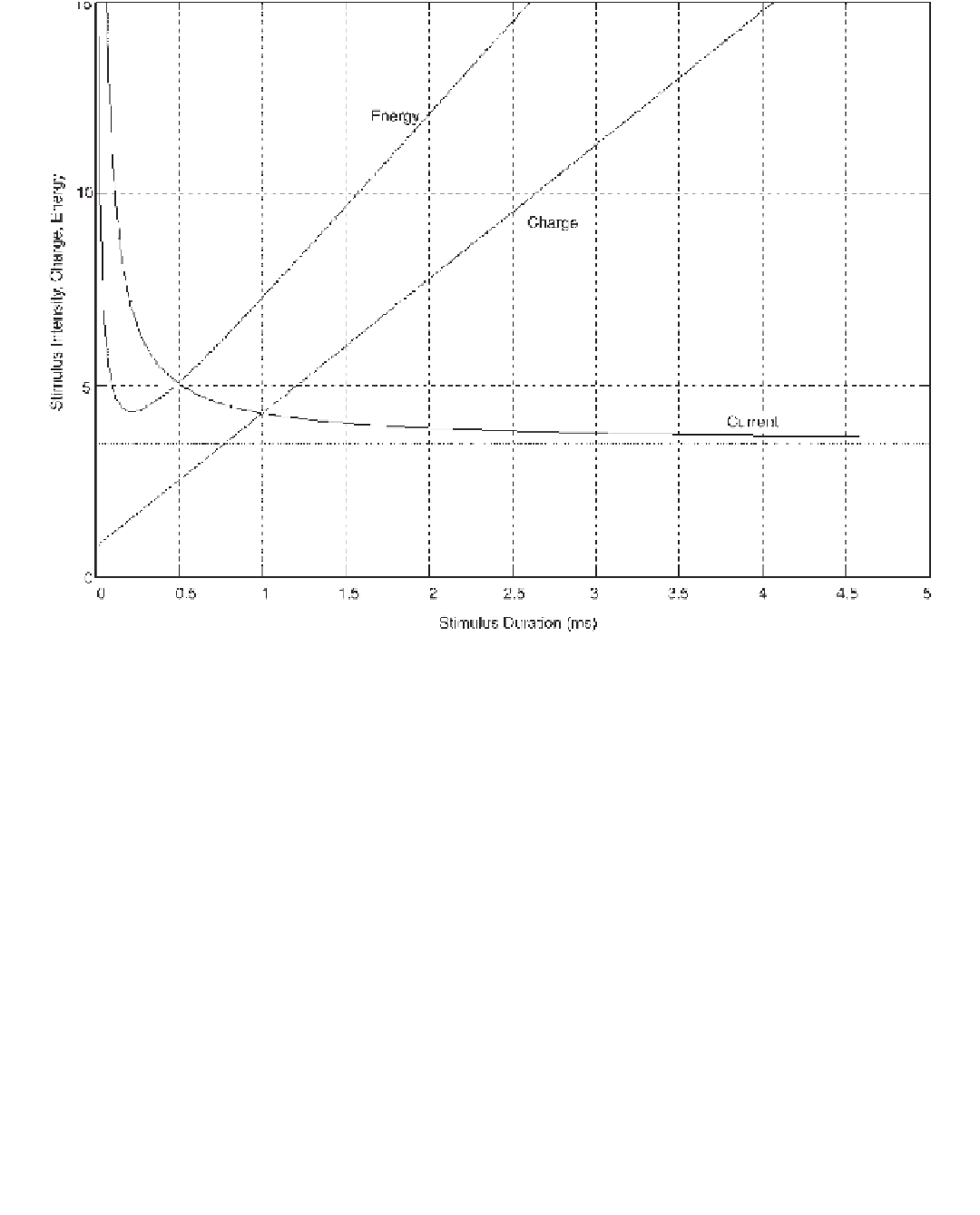Biomedical Engineering Reference
In-Depth Information
Figure 7.5
The strength-duration relationship can be expressed in terms of threshold current, threshold charge, or threshold energy needed
to excite a tissue. For a rectangular current stimulus of duration
t
delivered to a load of resistance
r
, these relationships are given by
I
threshold
rheobase
(1
chronaxie/
t
),
Q
threshold
rheobase
t
(1
chronaxie/
t
), and
E
threshold
rheobase
2
r
t
(1
chronaxie/
t
)
2
.
2
chron
t
axie
E
threshold
(rheobase)
2
r
t
1
where
t
is the stimulus duration and
r
is the resistance of the path through which the current
fl
flows (resistance of the wires, ionic resistance of the medium, and electrode-tissue interface
impedance). Figure 7.5 presents the three strength-duration curves in a single graph.
In practice, stimulation parameters close to those of the strength-duration curve are seldom
used. Owing to small
fluctuations of excitability, the target tissue may not always be excited
if the stimulus is only slightly above threshold. For this reason, the stimulus parameters are
usually set to at least twice the threshold in applications that require reliable stimulation.
fl
CLINICAL USES OF ELECTRICAL STIMULATION
Clinical electrical stimulation is simply the application of electrical currents to a body, be it
for function or therapy. As we just discussed, the current of electrons passing through the wires
is converted into a current of ions moved within the tissue, which are in turn capable of trans-
porting electrical charge across the membranes of excitable tissues. The purpose of these
applied currents is to cause the targeted depolarization of nerve and/or muscle to threshold.


Search WWH ::

Custom Search